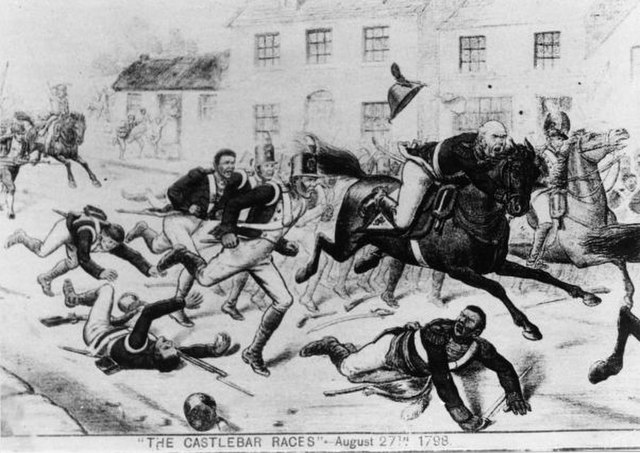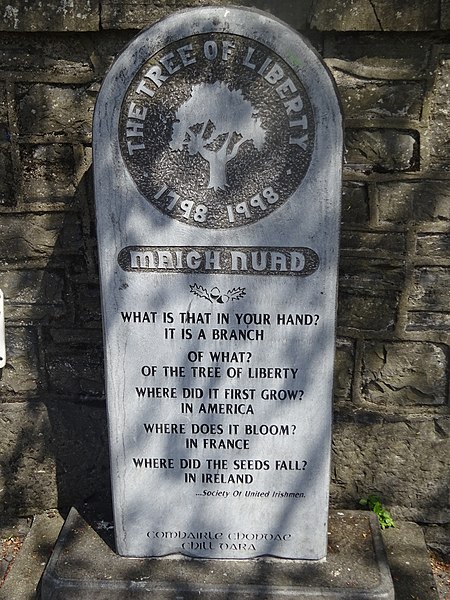Scullabogue Barn massacre
The Scullabogue massacre was an atrocity committed in Scullabogue, near Newbawn, County Wexford, Ireland on 5 June 1798, during the 1798 rebellion. A guarding party of rebels massacred up to 200 noncombatant men, women and children, most of whom were Protestant, who were held prisoner in a barn which was then set alight. The massacre was a reaction to reports of atrocities committed by government forces during the Battle of New Ross. Those killed were prisoners loyal to the British crown and it is the only instance during the rebellion where the rebels killed women and children. A participant in the rebellion, General Thomas Cloney, put the death count at 100.
Massacre at Scullabogue - illustrated by George Cruikshank (1845)
The Irish Rebellion of 1798 was a popular insurrection against the British Crown in what was then the separate, but subordinate, Kingdom of Ireland. The main organising force was the Society of United Irishmen. First formed in Belfast by Presbyterians opposed to the landed Anglican establishment, the Society, despairing of reform, sought to secure a republic through a revolutionary union with the country's Catholic majority. The grievances of a rack-rented tenantry drove recruitment.
In End of the Irish Invasion–or–the Destruction of the French Armada (1797), James Gillray caricatured the failure of Hoche's expedition.
"Pikeman" statue in Wexford Town
"Races of Castlebar", 27 August
Tree of Liberty monument in Maynooth, noting the influence of the American and French Revolutions





